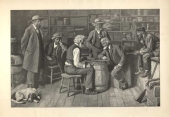The Checker Maven
The World's Most Widely Read Checkers and Draughts Publication
Bob Newell, Editor-in-Chief
Published each Saturday morning in Honolulu, Hawai`i
Contests in Progress:
Every Way You Look At It, You Lose

In Simon and Garfunkel's famous song, Mrs. Robinson, there are the famous lyrics
"When you've got to choose
Every way you look at it you lose."
Seems like something that might often apply to our game of checkers, but do the lyrics apply to the following position?
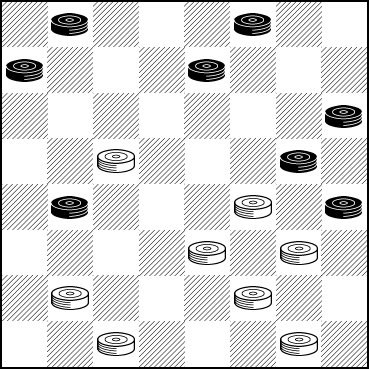
WHITE
White to Play and Draw
W:W14,19,23,24,25,27,30,32:B1,3,5,7,12,16,17,20
Well, not quite every way you look at it. There's one and only one way to draw in this position. Can you find it? This is not really a speed problem but neither is it too difficult; perhaps it's on the edge between "easy" and "medium." In any case don't be like Mrs. Robinson. Choose but don't lose, then click on Read More to check your solution.![]()
Sorry About That

"Sorry about that" is a phrase that is often said when one isn't all that sorry about--- whatever "that" is. In the photo above, you would think whoever rammed the boat through the wall will be pretty darn sorry when they get the bill for repairs, if they aren't truly sorry already.
"Sorry about that" is sometimes said in our game of checkers, when a player wins a game that the opponent was hoping to win or at least draw themselves. Here's an example.
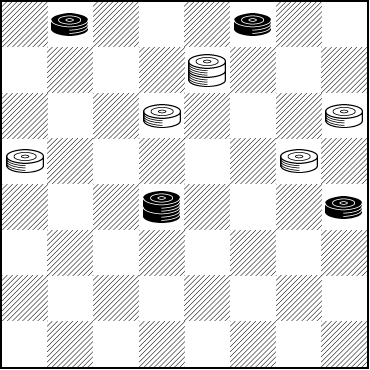
WHITE
White to Play and Win
W:W16,13,12,10,K7:B20,3,1,K18
Black is hoping for a outside chance at a draw given the bridge position. As White, can you spoil it? The problem is very much on the easier side and probably qualifies as a "speed problem" but it still takes a bit of vision. Try it out. Don't just say "sorry about that." In any event, clicking on Read More will reveal the snappy solution.![]()
Oh No!

"Oh no" was a song sung by a group called Marina and the Diamonds back in 2010. We must admit that no one in the Checker Maven offices has either heard of the song, or the group, for that matter. However the song contains the following timeless lyrics:
Da-da-dum, da-da-dum
Da-da-da-da-da-da-dum
Da-da-dum, da-da-dum
Da-da-da-da-da-da-dum
Da-da-dum, da-da-dum
Da-da-da-da-da-da-dum
Oh! Oh, no! Oh, no! Oh, no, oh!
In checkers, some of us tend to say "Oh no!" when we see a problem like the one below, with the dreaded label "Black to Play, White to Win." But nevertheless we've selected it as this month's Checker School entry. It's rather a challenge and is attributed to a Mr. E. A. Jones of Australia, date unknown but certainly prior to 1945, when it appeared in Andrew J. Banks' eclectic book, Checker Board Strategy.
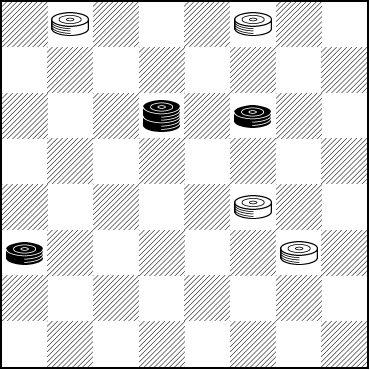
BLACK
Black to Play, White to Win
B:B12,22,K23:W9,14,30,32
Can you solve this one or will you just say "Oh no!" or even "Da-da-da-da-da-da-dum"? No matter; clicking on Read More yields an "Oh yes!" about showing you the solution.![]()
Contest 70: Pawns Beat Kings
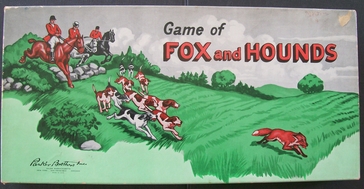
Although we have never been much for checker variants, there is an entertaining game called "Fox and Hounds." It can be played on a checkerboard. The fox has to escape the hounds and the hounds have to trap the fox. This is, in turn a variant of the old "Fox and Geese" game with similar rules but played on a board similar to that of Nine Men's Morris.
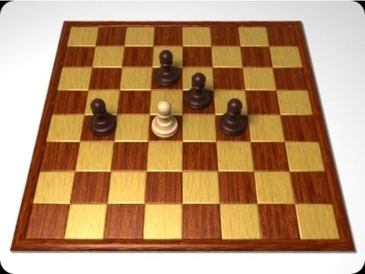
What does this have to do with us? Well, in the 70th iteration of Bill Salot's amazing Checker Problem Composing contests, the theme is "Pawns Beat Kings" and is in many way reminiscent of Fox and Hounds. Can the uncrowned men (hounds) defeat the powerful King (fox)?
There are three great problems on the contest page. Please try them out and then be sure to cast your vote for the one you like best. Meanwhile, here's an example of the theme. It's called Optical Illusion No. 81 and the composer is none other than Bill Salot himself--- at the age of 16! It was published in Elam's Checker Board on January 21, 1946.
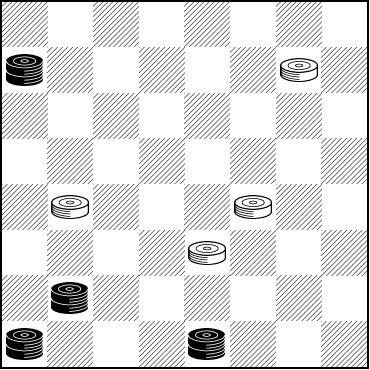
WHITE
White to Play and Draw
W:W8,17,19,23:BK5,K25,K29,K31
You don't need to defeat the mighty King; a draw will do. But can you manage it? Don't be a goose; try to outfox the opposition! When you're done, click on Read More to see the solution. Then, head on over to the contest page.![]()
Labor Day 2023

In the United States and Canada, Labor Day, a day to honor the worker, takes place on the first Monday of September. (In most of the world, it's on May 1 and goes under various names.) The Checker Maven has always respected workers of every category and we believe there is no work, no matter what it may be, that doesn't deserve recognition and appreciation when it is done honestly and with good intent. Hats off to the workers of the United States and Canada!
This Labor Day we turn to a great American problemist of yesteryear, Charles Hefter. His composition is simultaneously practical and elegant. Tommie Wiswell said it may be one of Mr. Hefter's best.
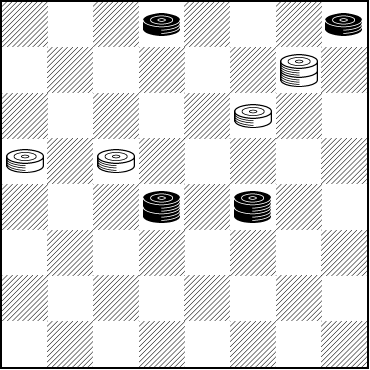
WHITE
White to Play and Draw
W:WK8,11,13,14:B2,4,K18,K19
To paraphrase a great modern day American problemist, Brian Hinkle, "Forces are even; it should be easy, right?" Actually, we rate it as moderate in difficulty, just right for a little Labor Day amusement in-between the picnics and the parades.
"Work" it out and then "work" your mouse over to Read More to view the solution.![]()
Checker School: All Kings

The picture above shows the Battle of Kings Mountain from the American Revolution. It was a common thing back in the day for battles to involve locations named for kings, be fought under kings, and at times even fought by the kings themselves. A battle of kings is certainly common in our game of checkers, and in this month's Checker School column, we look at a massive battle of five kings against four.
That would seem to be simple, wouldn't it? After all, the side with five kings has greater forces and ought to win. But it may (or likely may not) surprise you to know that many untrained checker players have trouble with two kings defeating one, and absolutely no idea what to do with three kings against two, let alone the larger arrays of four against three or five against four. You have to know what you're doing and in the larger settings patience and technique make up the order of the day.
Here's a five against four situation. Are you up to winning it?
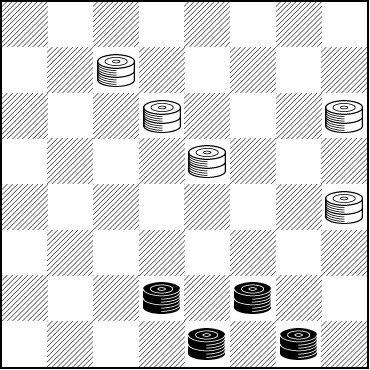
WHITE
White to Play and Win
W:WK6,K10,K12,K15,K20:BK26,K27,K31,K32
Give this position a royal effort and then click on Read More to see one possible solution and some additional commentary.![]()
Maybe

There's an old adage that when a politician says "yes" it means "maybe" and when a politician says "maybe" it means "no." There's a ring of truth to that, unfortunately.
Would that politics could be like checkers. When you win, you win. When you draw, you draw. And when you lose, you lose. There's no "maybe" about it.
But take a look at this position. It's not quite a "speed" problem but an experienced player will solve it quickly.
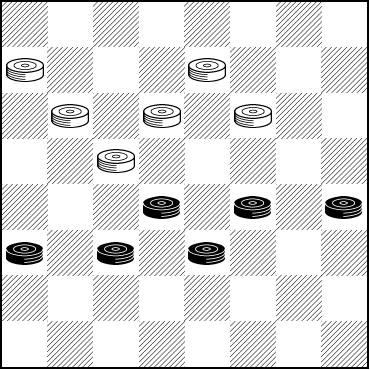
BLACK
Black to Play, What Result?
B:W28,26,24,23,22,19:B15,14,13,12,11,10
Maybe Black can win. Maybe Black can't win. Maybe Black can draw. However, there is a definite answer; we're just leaving it to you to work out. However, it's a sure thing--- not a "maybe"--- that clicking on Read More will show you the solution.![]()
Contest 69: Kingless Draws
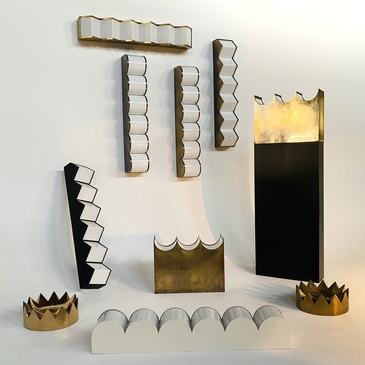
The picture above represents what we suppose to be the components of what the seller calls a "Crowned Kingless Table Lamp." We have no idea what that means. The seller was asking a high price, so this must be something quite in demand in whatever circles Crowned Kingless Table Lamps have currency.
In our game of checkers, however, "kingless" has a different meaning, although we won't even try to associate "crowned" in this context. Bill Salot brings us once again a series of kingless problems in his latest problem composing contest, #69 in the series. A unique feature is that all of the positions are drawn when properly played.
As a nice example, here is a problem called Hot Spot, composed by Roy Little. It won 2nd place in Contest 45 a few years back.
BLACK
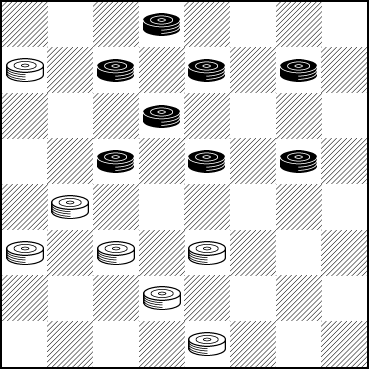
WHITE
White to Play and Draw
W:W5,17,21,22,23,26,31:B2,6,7,8,10,14,15,16
Give this one a try (you can see the solution by clicking on Read More) and then head over to the Contest Page for four more excellent problems with the same theme. And don't forget to vote for your favorite!![]()
A Tricky One

The magician above is indeed full of all sorts of tricks and we might well call her a "tricky one" although likely she would rather be known by the more formal designation of prestidigitator.
Often in the early part of each month we present a "speed" problem--- something for you to solve as quickly as you can. Such problems generally fall into the "easy" category. Today, though, we have a "tricky one" sent along (with analysis) by regular contributors Lloyd and "Gosh Josh" Gordon of Toronto. Is it as full of tricks as the magician above? You'll have to decide for yourself.
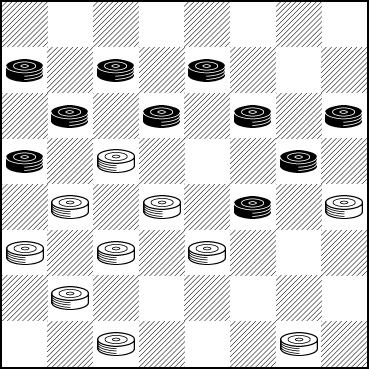
WHITE
White to Play and Draw
W:W14,17,18,20,21,22,23,25,30,32:B5,6,7,9,10,11,12,13,16,19
Although the problem terms are for White to find the draw, see if you can also hold the draw for Black. Unless you're an upper-level player you may not solve this one speedily, but some effort will be well rewarded. When you're ready to see the solution, though, there's no trick; just click on Read More.![]()
Changing and Exchanging

When traveling abroad, do we change currency or exchange currency? Or do we change currency at a Currency Exchange? We can probably say that's all a matter of semantics.
Not so much so, though, in our game of checkers. If you solve the twin problem below, sent to us by regular contributors Lloyd and "Gosh Josh" Gordon of Toronto, you'll see what we mean.
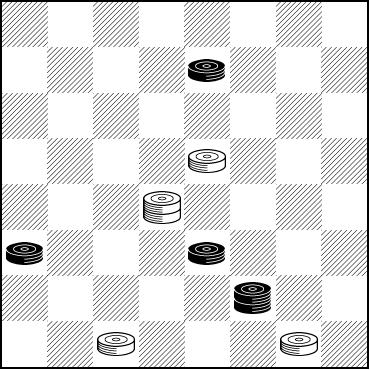
WHITE
White to Play and Win
W:W15,K18,30,32:B7,21,23,K27
WHITE
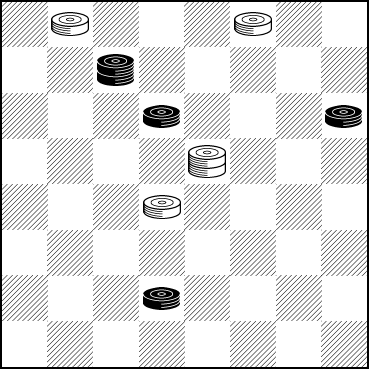
BLACK
Black to Play and Win
B:W15,K18,30,32:B7,21,23,K27"
These are not terribly difficult. The Black win is especially easy, and as for the White win, we've practically given it away. Find the solutions--- time yourself if you want an extra challenge--- and then exchange your mouse position with Read More (or should we say change your mouse position to Read More) to see the solutions.![]()
The Checker Maven is produced at editorial offices in Honolulu, Hawai`i, as a completely non-commercial public service from which no profit is obtained or sought. Original material is Copyright © 2004-2024 Avi Gobbler Publishing. Other material is the property of the respective owners. Information presented on this site is offered as-is, at no cost, and bears no express or implied warranty as to accuracy or usability. You agree that you use such information entirely at your own risk. No liabilities of any kind under any legal theory whatsoever are accepted. The Checker Maven is dedicated to the memory of Mr. Bob Newell, Sr.

